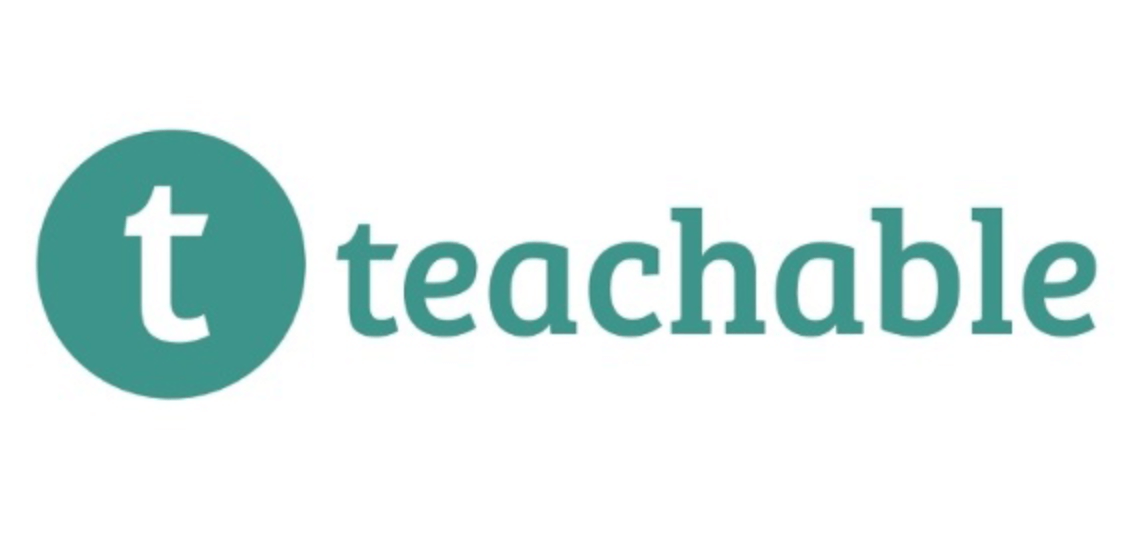Introduction
Overview of Teachable as an online learning platform
As an experienced user of Teachable, I understand the potential of the platform as an online learning solution. Teachable helps users create and distribute content through a variety of features, such as course creation tools, integrated payment processing, and customizable video players. What sets the platform apart is its ease of use, allowing even novice users to create comprehensive online courses with minimal setup and effort.
Explaining the need and benefits of exporting a course from Teachable to other platforms
In some cases, course creators may find themselves in need of exporting their courses from Teachable to other online learning platforms. While this can be a daunting task, the ability to move courses from one platform to another is an invaluable asset that has the potential to open up new opportunities and expand the reach of the course. Exporting a course from Teachable can be beneficial in many ways, including increased visibility and access to more features on the new platform. Additionally, course creators can benefit from the ability to access more payment options, allowing them to diversify their income streams.

Exporting Course Content from Teachable
Understanding the export options available within the Teachable platform
As an experienced user of Teachable, I understand the importance of being able to export course content to other platforms. Fortunately, Teachable offers a range of options for course authors who need to export content, depending on their specific needs. The two main export options are Teachable Import and Thinkific Export, both of which provide ways to easily transfer courses and materials to other platforms.
Exploring the process of exporting course materials, including videos, documents, and assessments
For instructors who wish to export course materials such as videos, documents, and assessments, Teachable Import is the best option. This feature allows you to export all course materials as well as student data – including users, enrollments, and course progress. The exported data is presented in CSV files, which can then be uploaded into other learning platforms.
Alternatively, the Thinkific Export is a quicker option for exporting courses, as it does not include student data. This export option allows you to quickly transfer your course content, including videos, documents, assessments, and quizzes, into Thinkific formats. Thinkific Export also supports multiple languages, making it a great option for course authors who need to deliver content in multiple languages.

> > Click Here to Start Teachable for Free < <
Preparing the Exported Course Content
Reviewing the Exported Files and Formats to Ensure Compatibility with Other Platforms
As a Teachable user, I often need to export my courses to other platforms, such as Thinkific or Vimeo. In order to ensure a smooth transition, it is important to review the exported files and formats to make sure they are compatible with the target platform. The most common file types are HTML, PDF, and text, and I have found it helpful to convert the files to the target platform’s specifications when possible. Additionally, I recommend reviewing the exported files for any formatting issues that may arise during the export process.
Organizing and Structuring the Course Content for Easy Migration
When transferring a course from Teachable to another platform, it is important to organize and structure the content for easy migration. This involves familiarizing yourself with the target platform’s course creation tools and features and structuring the course content accordingly. For example, if you’re exporting the course to Thinkific, you may find it helpful to break up the content into modules and lessons to create an engaging course structure. Additionally, I have had success with – adding media such as quizzes, images, and videos to make the course more interactive and engaging.

> > Click Here to Start Teachable for Free < <
Importing Course Content to the Destination Platform
Identifying the target platform or learning management system (LMS) for importing the course
When it comes to exporting and importing courses from Teachable to other platforms, the first step is to identify the target platform or learning management system (LMS) that you would like to use for your course. There is a wide range of platforms available, including popular options such as WordPress, Udemy, and Kajabi. It is important to research and compare these platforms to determine which one best meets your needs and has the features you require for successful course delivery.
Providing step-by-step instructions on how to import the exported course content to the chosen platform
Once you have identified the destination platform for your course, the next step is to import the exported course content to the chosen platform. The exact process for importing will vary depending on the specific platform you are using. However, in most cases, the exported files from Teachable can be uploaded directly to the destination platform. This process may involve uploading the course files to the platform, setting up the course structure, and customizing the course design. In some cases, the platform may also require you to provide additional course details, such as descriptions, pricing, or access levels. Once you have uploaded and configured your course, you will be able to preview it and, if necessary, make any adjustments.

> > Click Here to Start Teachable for Free < <
Converting Teachable-Specific Features
As an experienced user of Teachable, I am well-versed in the platform’s unique features and functionalities. When you export a Teachable course to another platform, certain Teachable-specific features may require conversion or adjustment during the export process. In this section, I will discuss the process of converting Teachable-specific features as well as potential workarounds or alternatives for certain Teachable features on the destination platform.
Addressing Teachable-specific features or functionalities that may require conversion or adjustment during the export process:
Since Teachable offers a variety of features that may not be supported on other platforms, it is important to address any Teachable-specific features or functionalities that may require conversion or adjustment during the export process. For example, images, quizzes, and surveys created in Teachable will need to be manually imported into the new platform, while Teachable-specific features such as file annotations, course prerequisites, and completion certificates may need to be reformatted or adjusted. Additionally, certain Teachable features, such as coupons, upsells, and course bundles, may not be supported on the destination platform, so be sure to look into potential workarounds or alternatives for those features.
Discussing potential workarounds or alternatives for certain Teachable features on the destination platform:
When exporting a course from Teachable to another platform, it is important to keep in mind that certain Teachable features may not be supported on the destination platform. In such cases, it is helpful to look into potential workarounds or alternatives. For example, coupons and course bundles can be replaced with discounts or subscription plans, respectively. Additionally, upsells can be replaced with cross-selling or marketing automation tools. Knowing the available workarounds and alternatives can help you ensure that your course content is properly maintained when exporting from Teachable to another platform.

> > Click Here to Start Teachable for Free < <
Ensuring Course Quality and Functionality
Performing a thorough quality check of the imported course content on the destination platform
As an experienced user of Teachable, I understand the importance of ensuring the quality and functionality of courses after they are exported to other platforms. A thorough quality check should be performed on the destination platform to verify that all course content is imported correctly. This includes conducting a comprehensive review of text-based course materials, verifying the formatting of images and videos, and checking all links and navigation elements. If any of the exported course elements are missing or distorted, they should be corrected before launching the course.
Verifying the functionality and interactivity of course elements, such as quizzes or assignments
Once the course content is imported and verified, it’s important to evaluate the functionality and interactivity of course elements, such as quizzes or assignments. In my experience, interactive elements can often be rendered incorrectly or fail to work in the new environment. As such, it is important to test all interactive components on the destination platform to ensure they are functioning correctly. This can be accomplished by carefully walking through each course page, navigating to each quiz, assignment, and other interactive elements, and checking that all elements are working as intended.

> > Click Here to Start Teachable for Free < <
Course Pricing and Payment Integration
Considering the pricing and payment setup on the destination platform, if applicable
When exporting a course from Teachable to other platforms, it is important to consider the pricing and payment setup of the destination platform, if applicable. For example, Teachable has its own built-in payment processing options, making it easier to monetize courses on the platform. On the other hand, if you are exporting your course to a platform such as LinkedIn Learning or Skillshare, you may need to adjust or customize the pricing of your course or set up the appropriate integration options.
Exploring the integration options or adjustments needed for monetizing the exported course
If you’re exporting your course to a platform that doesn’t have its own built-in payment processing solution, such as LinkedIn Learning or Skillshare, you may need to explore the various integration options available. Depending on which platform you are exporting to, there are a variety of third-party solutions that you can use to monetize your course, such as PayPal or Stripe. Additionally, you may need to adjust certain aspects of your course pricing, such as the course length, the number of lessons, or the course price itself. By considering the payment integration options and potential pricing adjustments that are needed for monetizing your course on the destination platform, you will be able to ensure a smooth transition when exporting your course.

> > Click Here to Start Teachable for Free < <
Promoting and Launching the Exported Course
Outlining strategies for promoting and marketing the exported course on the new platform
As an experienced user of Teachable, I understand the process of exporting a course and the importance of marketing the course on the destination platform for a successful launch. In this section, I will outline strategies for promoting and marketing the exported course on the new platform, as well as sharing tips for a successful course launch.
When it comes to marketing a course, the most important thing to consider is the audience. Knowing the needs and preferences of your target audience will shape your marketing plan and ensure that you reach the right people. Additionally, consider the platform you’re promoting the course on. Each platform is different, and understanding the nuances of each is essential to create an effective plan.
Once you have a plan, you can begin to share your course with potential students. This can include reaching out to directly to those who may be interested in the course, creating ads on the platform, and creating content to build anticipation for the course launch. Additionally, you may want to consider offering discounts or other incentives to attract students.
Sharing tips for a successful course launch on the destination platform
When launching a course on a new platform, there are several key steps to ensure a successful launch. First, be sure to take advantage of the platform’s features to promote the course to potential students. This can include joining groups, creating ads, and using the platform’s analytics tool to track performance. Additionally, build a network of other course creators on the platform and look for opportunities to collaborate and promote each other’s courses.
It is also important to make sure that the course is well-organized and clearly laid out. This includes organizing course content into sections, setting clear expectations, and providing a comprehensive learning path. Additionally, make sure to use engaging visuals and interactive elements to create an immersive learning environment for your students.
Once the course is launched, be sure to provide ongoing support for your students. This can include creating a community forum, setting up a Q&A session, and offering one-on-one support. Additionally, continuously monitor and adjust course performance to ensure students are successfully progressing through the course.

> > Click Here to Start Teachable for Free < <
Monitoring and Managing the Exported Course
Discussing ongoing course management and maintenance on the new platform
As an experienced user of Teachable, I understand the importance of monitoring and managing a course after it has been exported to another platform. To ensure the success of the course, careful consideration must be given to the ongoing course management and maintenance of the new platform. It is important to familiarize yourself with any new tools available and to apply the same best practices you used on Teachable. This includes staying up-to-date with any updates to the course content, responding to student feedback, and promoting the course.
Exploring analytics and tracking options available on the destination platform
In addition to managing the course, tracking the progress of your students is also important. The destination platform may offer analytics and tracking options that are different from those available on Teachable. Therefore, it is essential to explore the analytics and tracking options available on the new platform and understand how to use them. This will help you gain insights into the performance of your course and ensure that it meets the expectations of your students.
Conclusion
Recap of the export process from Teachable to other platforms
As an experienced Teachable user, I have exported courses to other platforms several times and have gained a good understanding of the process. The main steps include downloading the course content from Teachable as a file or folder, uploading this content to the other platform, and mapping the course content to the other platform’s structure. Depending on the platform you are exporting to, this process may involve additional steps, such as creating quizzes or setting up payment plans. It is important to familiarize yourself with the export process of your target platform to ensure a smooth transition.
Encouragement to explore new opportunities and reach a broader audience by exporting courses
Exporting courses from Teachable provides an excellent opportunity for course creators to reach a broader audience and explore new opportunities. With the right strategies and tools, you can expand your business and increase your revenue by tapping into new markets. Moreover, you can use the exporting process as an opportunity to improve your course content and make sure it is up to date and relevant for a wider audience. So take the time to learn the process and explore the potential that exporting your courses can bring.
